As you may know, Hawaii has planned since 2015 to have 100% renewable energy in the next two decades. Last year, statewide, we achieved 35%. Here on Kauai, pictured above, however, we already are well beyond 60%! That’s something to be proud of, especially given that previously, Hawaii has generated the majority of its electricity from increasingly high-priced imported oil. Been to the gas station lately?
Hawaii’s efforts are being closely monitored by other states and are providing a preview of moving towards wide-scale renewable energy. It makes sense for Hawaii to lead in renewable energy because we have some of the most expensive fuel costs in the country. The price here is $0.33 per kilowatt-hour. US residents consume an average of 900kWh per month. So we’ll let you do the math – it isn’t good.
Solar has become so efficient that 1/2 of the state’s renewable energy is coming from our rooftops. That is followed next by wind power and then by large-scale solar.
It’s interesting to note that nearly 80% of the state’s solar installations now include battery systems. To achieve its goal of 100% renewable energy, the state plans to:
- “Align government regulations and policies with clean energy goals;
- Facilitate processes for developing renewable energy;
- Deploy renewable generation and grid infrastructure;
- Explore next-generation technologies and new applications of existing technologies.”
Solar-Powered Beat of Hawaii
To digress, here at Beat of Hawaii, your editors are both fully committed to renewable energy, with solar power and with fully electric vehicles arriving soon. One of those vehicles is a Ford F-150 lightning. That truck is capable of acting much like a Tesla PowerWall, such that when reading Beat of Hawaii, the experience will soon be “driven” exclusive by renewable energy, through a combination of solar power and a Ford truck. The Ford Intelligent Backup Power system links the truck’s colossal battery pack with an intelligent, bidirectional charger capable of powering a building. Times they are a-changing.
Kauai jumpstarted the state’s transition.
The Garden Island has focused on renewables for years. The Kauai power company, KIUC, is expected to reach 80% renewable energy in just the next several years. Kauai is looking at what it can transform next which includes somehow reducing dependence on automobiles. That plan includes improved bus transportation (we’ll believe that when we see it), bicycles and bicycle-sharing, and better walking accommodation. The lack of sidewalks and accessibility at present, however, is discouraging.
Solar power provides the majority of the state’s renewable energy generation, primarily due to the growth of small-scale, customer-based solar panel power generation, which has recently doubled. Rooftop solar systems in Hawaii are now fully competitive with utility-based power.
Significant wind resources are also found in Hawaii, both on-shore and offshore, primarily based on seven utility company wind farms located on the Big Island, Maui, and Oahu. Geothermal and ocean wave energy are all part of the current and planned future mix.
Hawaii travel is also adopting renewable energy.
The Hawaii hospitality industry has long been interested in sustainability with solar high up on its priority list. Many hotels have or will be converting to primarily solar power.
Among those who have already adopted wide-scale solar power are the Hyatt Regency Maui, the Kea Lani Resort, and Turtle Bay Resort, just to name a few.
Get Breaking Hawaii Travel News
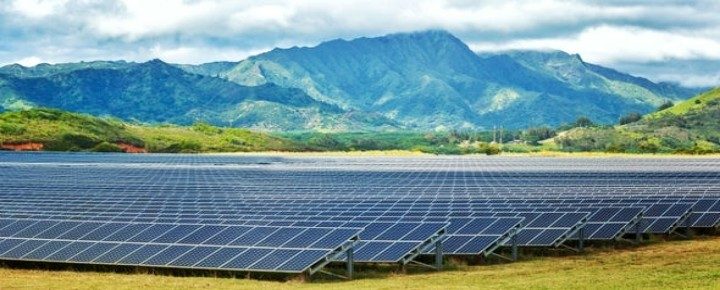
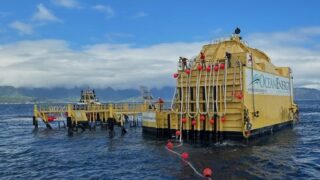
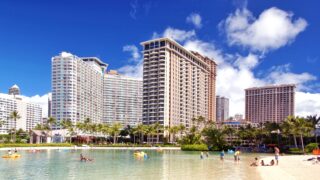
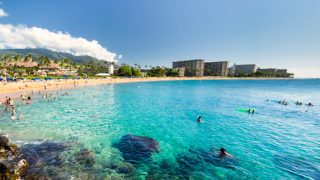
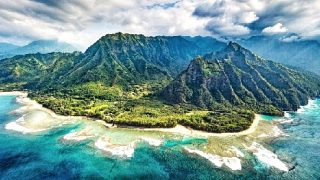

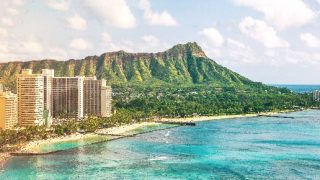
Right on! Rooftop solar + home batteries is definitely the way to go, especially now that rooftop solar is cheaper than grid power in most places and your electric vehicle can do double duty as your home battery! The Ford Lightning looks pretty sweet. I’m hoping the Cybertruck will also have the capability to serve as backup power for my house. If not, I may have to reconsider my preorder…
On bikes:
As a frequent visitor to Maui and avid cyclist I can’t believe more people don’t bike everywhere. The weather is perfect almost every day. Even modest investments in bike infrastructure would alleviate traffic issues and reduce dependence on imported fossil fuel.
How do hotels convert to solar? Will less roof space and higher density, how can they install enough panels?
Tops of parking garages are prime locations, actually. They can provide covered parking for regular parking lots.
The windmills, great idea, but no one is talking about the eyesore it creates to the Aina! It sad to see the new 15 added on West Maui destroys the beauty. It looks like the clouds do not cover the mountain top for rain as well like it has in the past.
WHERE ARE YOU GOING TO PUT THESE BLADES when SHELF LIFE EXPIRES.(20-25yrs) Do we have room in our Landfill? Same with solar homes which have lead and car batteries!(10-15yrs) non biodegradable. Still Need Coal To Make These !
Although renewable energy is a grand concept, it’s not even close to being a true 100% green industry anytime in the next half century (more than likely)… especially without a paradigm shift in world wide economics and thought process beyond making the all mighty dollar. Getting the Arab countries to give up their bread and butter (oil) is not going to be an easy sell, either.
If Hawaii thinks 100% is just converting to renewable energy products, they need to put down the beer goggles. Until the RE industry starts making renewable/green parts for end-line products, which won’t likely happen in the next 15 years, it will just be another problem like plastic straws and bottles, never becoming 100% truly green.
They currently are still using fossil fuels to produce/manufacture many parts for products. Some products will continue to use fossil fuels to run them (gear oil for the wind turbines for example), and until they start using biodegradable materials for all RE industry products, which will likely take multiple decades to develop it’s not 100% “green” at all.
Sheryl B. already talked about some of the pit falls experienced on the big island with these massive wind turbines. The fact that the props/blades are not able to be broken down and reused at all, speaks volumes. They are burying old props/blades in Wyoming by the tens of thousands. Is this what we can expect long-term from this industry? The RE industry has plenty of “dirty” secrets, when they are frequently portrayed to be clean. Michael Moore even calls out this industry in his movie, Planet of the Humans. Don’t get me wrong, I’m glad Hawaii is looking to go green, but this is an industry that needs to be scrutinized and cleaned up.
I think you guys doing your part is cool. I also have full solar in my all electric CA home and in Hawaii.
Hi,
When you say 35% or 60% or 100% energy provided by solar/renewable, aren’t you really talking about homes. Or are you also including businesses, trucking, the over-budget rail etc?
The idea is that solar energy will be used during the day to pump the water uphill and then the water will flow back down at night to generate electricity.
Very interesting! I have been looking into the Ford F-150 Lightening. I hope you’ll do a follow up on it in the future. And I’m glad you
asked… I have been to a gas station lately, but it was around here, where I’m sure it is much cheaper than Kauai. Thought I’d get the sticker shock out of the way, since we’re arriving soon. How much is it running on Kauai right now? Thanks so much for you help.
Hi Babette.
It depends where you go with Costco being cheapest and still just under $4. Other stations might be anywhere up to $1 more.
Will report on the F-150.
Aloha.
Thanks so much BOH. That’s not so bad! I figured it would be double what we have here on the east coast ($3.15 w/o a discount card). Unfortunately, I have a Sam’s Club card (what’s available here), not a Costco card. But, given the car rental costs this year, I’m happy to hear gas is not much worse.
Saw the ad for the Lightening again last night. Powering you house with your truck?….mind blown.
Ford estimates the truck will be able to provide full power to homes for about three days and potentially up to ten days if users ration their power usage. The F-150 Lightning maxes out at 10,000 pounds of towing capacity and will be able to carry a maximum of 2,000 pounds in the truck bed.
That would be something if true.
I remember when sugar came waste (bagasse) was used to generate electricity on Kauai.
Sure has come a long way baby!
And we have the top energy prices in the entire country….no one in State government cares about the cost of doing business or the cost of living in Hawaii. It chases a most people away.
Solar does not help this ugly reality.
Aloha BoH!
Now, imagine if we all harnessed this energy for our own living conditions AND created an economy as a side effect? DFI+DCIL needs to get up to speed with the rest of the world. Hawaii could be the center of the crypto future, but stands in its own way while raising taxes on tourism. The biting of the gift horse is ironic.
We need to move into the 21st century while protecting our Āina. We can do both.
Mahalo
The wind mills on the Big Island are an eyesore and every time we have driven by them, over half of them are not operational. The salt air causes them to rust and not work. Then you have a windmill graveyard on your hands with rusted parts laying all around. It is an eyesore. I can see solar panels on the homes there as a viable option considering the year round sunny weather, but those windmills are a whole other story.
You don’t understand how windmills work
Here on Kauai they are using a process called pumped storage hydro to produce electricity for night time demand. With so much water resources around the islands, I’m surprised not more is invested in hydro technologies and hydrogen fuel cell technology.
Pumping water uphill to generate electricity? That takes more energy than it will create.
When there’s excess generation, when there is more generated than the existing demand, which does happen, the excess is used to pump the water uphill to a reservoir. When generation falls, usually at night if you have a solar-heavy mix, the hydro can be tapped. It’s not a new idea. It beats shutting down the windmills when there’s not enough demand when the wind is blowing.
Yes, I have been watching Kauai slowly convert to renewable energy, which is a necessity for all us on the planet.
Not a necessity for all of us on the planet: I pay the equivalent of 7.5 cents American per kWh, thanks to Hydro (B.C. Canada). Renewables are expensive, unreliable and inefficient. In the long run, nuclear would be a better option for Hawai’i.